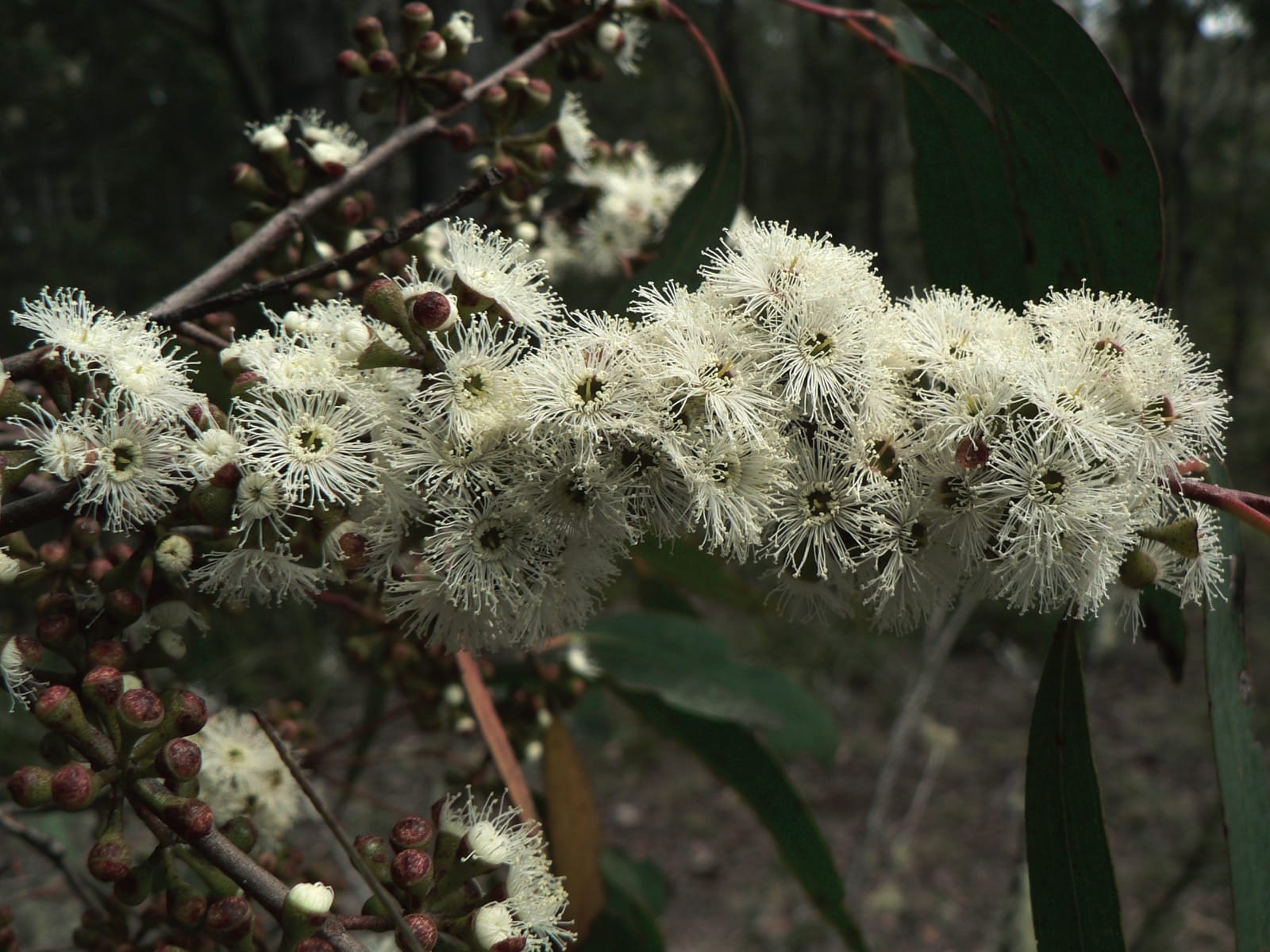Eucalyptus radiata
Credits
Article from New Trees by John Grimshaw & Ross Bayton
Recommended citation
'Eucalyptus radiata' from the website Trees and Shrubs Online (treesandshrubsonline.
Genus
Common Names
- Narrow-leaved Peppermint
Other taxa in genus
- Eucalyptus acaciiformis
- Eucalyptus albida
- Eucalyptus amygdalina
- Eucalyptus archeri
- Eucalyptus blakelyi
- Eucalyptus bridgesiana
- Eucalyptus brookeriana
- Eucalyptus camaldulensis
- Eucalyptus camphora
- Eucalyptus chapmaniana
- Eucalyptus cinerea
- Eucalyptus coccifera
- Eucalyptus cordata
- Eucalyptus crenulata
- Eucalyptus cypellocarpa
- Eucalyptus dalrympleana
- Eucalyptus delegatensis
- Eucalyptus elliptica
- Eucalyptus fastigata
- Eucalyptus fraxinoides
- Eucalyptus globulus
- Eucalyptus gregsoniana
- Eucalyptus gunnii
- Eucalyptus johnstonii
- Eucalyptus kybeanensis
- Eucalyptus lacrimans
- Eucalyptus laophila
- Eucalyptus leucoxylon
- Eucalyptus macarthurii
- Eucalyptus macrorhyncha
- Eucalyptus mannifera
- Eucalyptus melliodora
- Eucalyptus mitchelliana
- Eucalyptus moorei
- Eucalyptus morrisbyi
- Eucalyptus neglecta
- Eucalyptus nicholii
- Eucalyptus nitens
- Eucalyptus nova-anglica
- Eucalyptus obliqua
- Eucalyptus oreades
- Eucalyptus ovata
- Eucalyptus parvula
- Eucalyptus pauciflora
- Eucalyptus praecox
- Eucalyptus regnans
- Eucalyptus remota
- Eucalyptus risdonii
- Eucalyptus rodwayi
- Eucalyptus rubida
- Eucalyptus saligna
- Eucalyptus sideroxylon
- Eucalyptus stellulata
- Eucalyptus subcrenulata
- Eucalyptus tenuiramis
- Eucalyptus urnigera
- Eucalyptus viminalis
Tree to 10–30 m, 1 m dbh. Bark grey to greyish brown and shortly fibrous throughout. Branchlets orange-red. Juvenile leaves lanceolate and dull green. Adult leaves thin, green, 7–15 × 0.7–1.5 cm, lanceolate to linear, falcate or not, lateral veins distinct, margins entire, apex acute or acuminate; petiole terete, 0.5–1.5 cm long. Inflorescences solitary and axillary; umbellasters with 7–23 flowers. Flower buds club-shaped, green; hypanthium 0.2–0.3 cm wide; stamens yellow or cream. Capsule hemispherical or subglobular, 0.4–0.7 cm diameter; valves three to four, flush or included. Boland et al. 1984, Chippendale 1988. Distribution AUSTRALIA: Australian Capital Territory, New South Wales (southeast), Victoria (south central). Habitat Tall, open forest, between 50 and 1200 m asl. USDA Hardiness Zone 8. Conservation status Not evaluated. Illustration NT356. Taxonomic note Eucalyptus radiata subsp. sejuncta L.A.S. Johnson & K.D. Hill occurs only in northeastern New South Wales and has broadly lanceolate leaves. Two species recently separated from E. radiata are E. robertsonii Blakely and E. croajingolensis L.A.S. Johnson & K.D. Hill. The former has linear to narrowly lanceolate adult and juvenile leaves and glaucous flower buds, while the latter has broad-lanceolate, dull blue adult and juvenile leaves and glaucous flower buds (Hill & Johnson 1991a).
Eucalyptus radiata is chiefly valued by the Gum Group (2007) as a stool for the herbaceous border, resprouting vigorously when coppiced, when it produces densely clad, somewhat weeping shoots. At Cistus Nursery this character was discovered when their specimen was run over by the truck exchanging their portable toilets (S. Hogan, pers. comm. 2007). If not coppiced (by whatever agency) it can make a fast-growing tree of some stature, a specimen of 16 m being recorded from Cotehele, Cornwall in 2006 (TROBI). It is not, however, very hardy, with bark being split at only –6 ºC, and is intolerant of any prolonged subzero temperatures. At Lullingstone Castle in 2005 both E. radiata and the related E. robertsonii were dead even before the infamous mid-November frosts (T. Hart Dyke, pers. comm. 2007).

